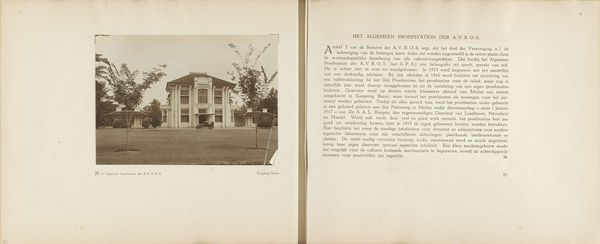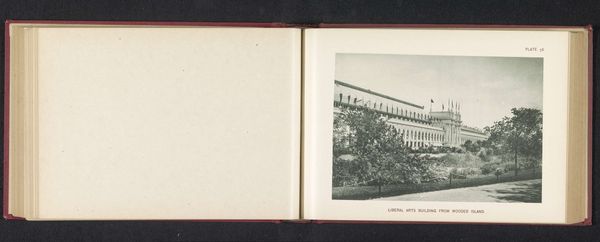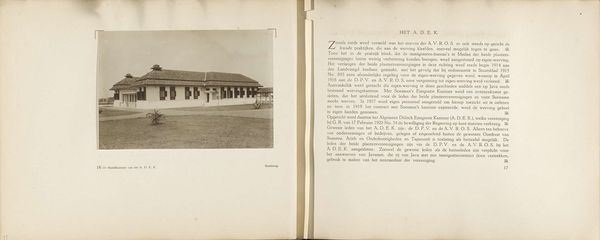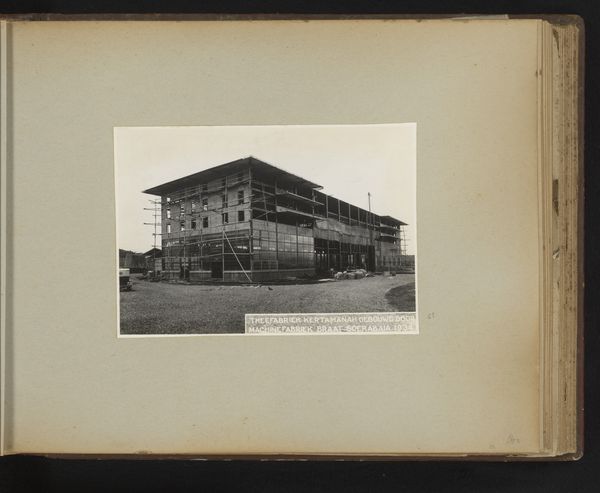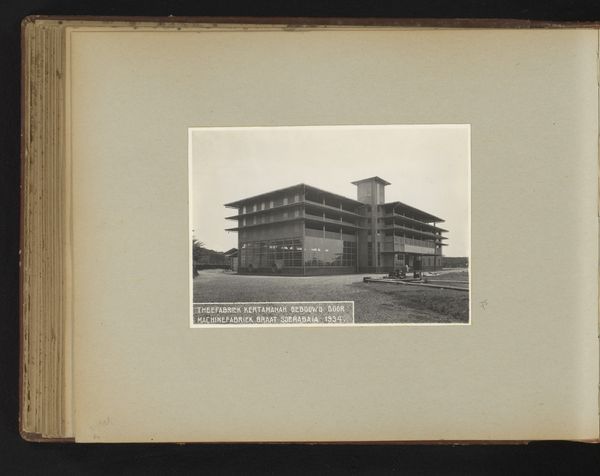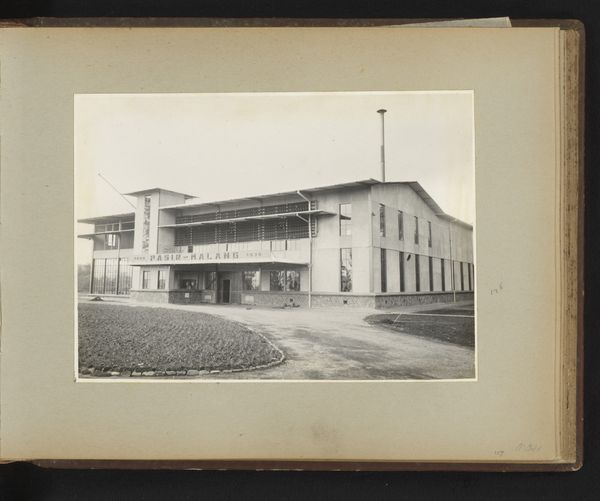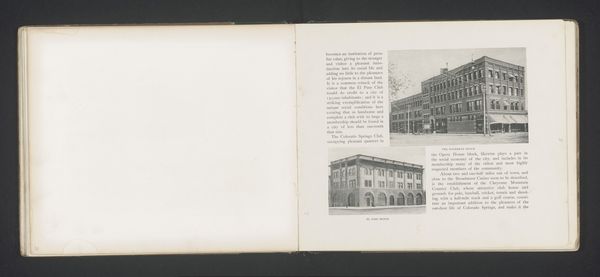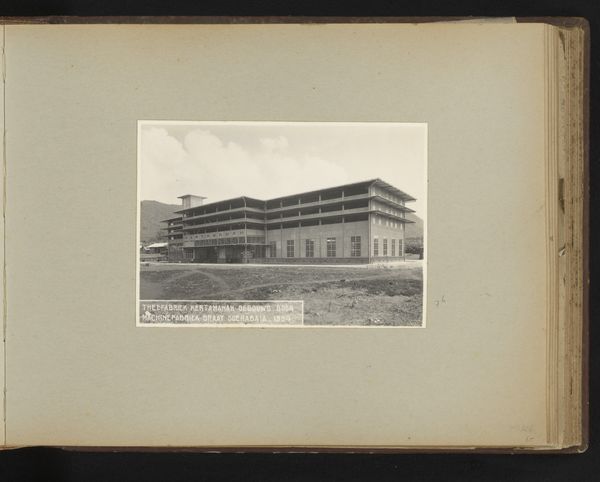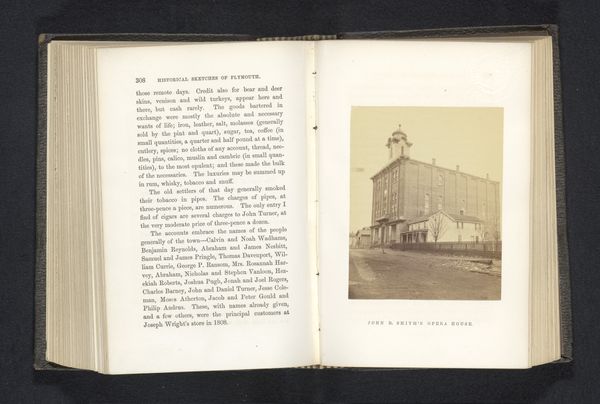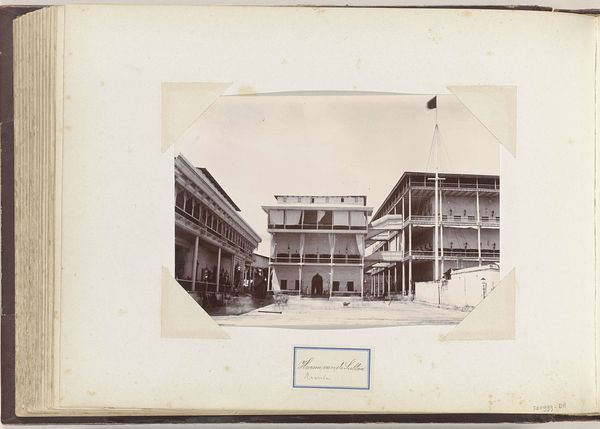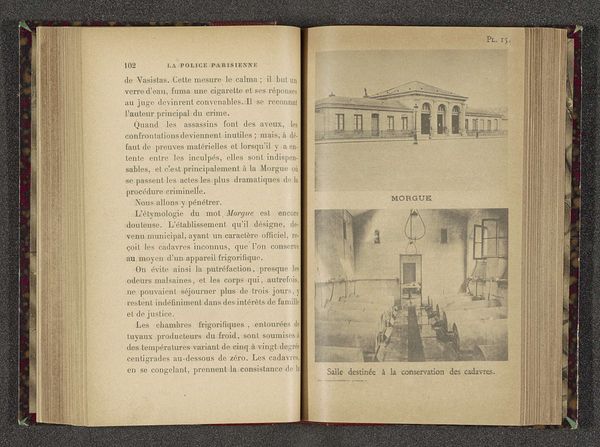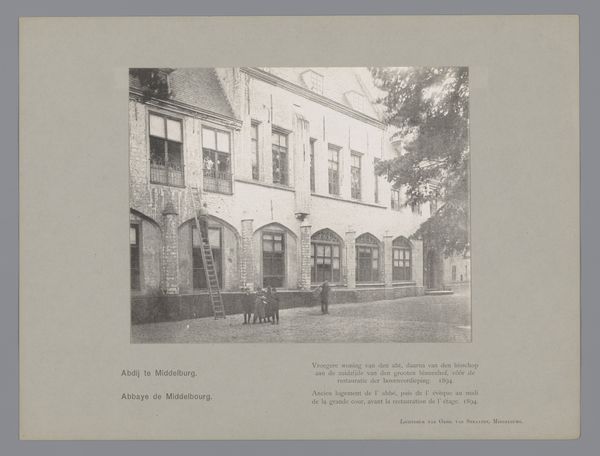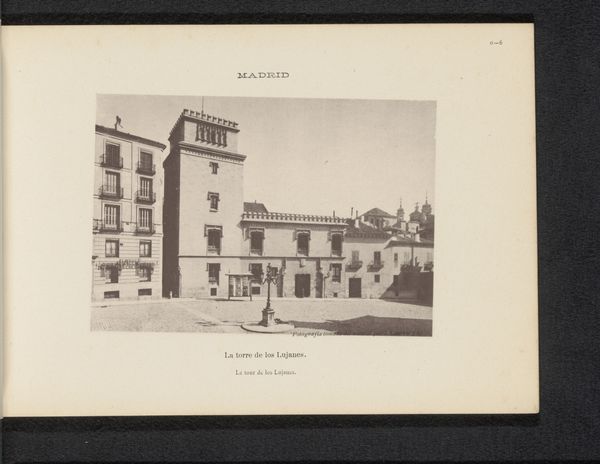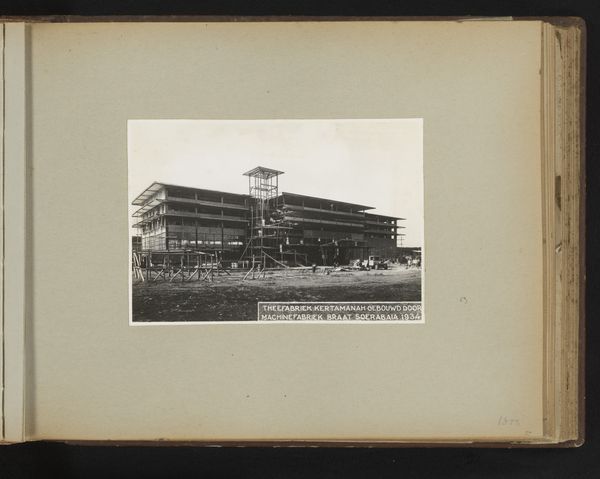
Pagina 112 en 113 van fotoboek van de Algemeene Vereeniging van Rubberplanters ter Oostkust van Sumatra (A.V.R.O.S.) c. 1924 - 1925
0:00
0:00
jwmeyster
Rijksmuseum
print, photography, architecture
# print
#
asian-art
#
landscape
#
photography
#
architecture
Dimensions: height 240 mm, width 310 mm
Copyright: Rijks Museum: Open Domain
Curator: Here we have pages 112 and 113 from a photo book of the General Association of Rubber Planters on the East Coast of Sumatra, or AVROS, dating to around 1924-1925. It's part of the Rijksmuseum collection. Curator: My initial reaction is the strong horizontal composition. It gives the image a very stable, almost static quality. And the contrast between the photographic image on the left and the block of text on the right is stark, emphasizing the photo's tones. Curator: Indeed, but that very stability is deceptive, I think. AVROS was a powerful colonial entity. This image, seemingly innocuous, promotes a particular narrative of industry and progress while eliding the exploitative labor practices inherent in rubber plantations in Sumatra during that time. Curator: I see your point. The repetitive nature of the architecture, all those identical windows, they do lend a sense of dehumanization, fitting with your argument about exploitative labour. Still, the light here, the way it reflects off the building, creates interesting geometric shapes. Curator: Absolutely, and we need to deconstruct how that light and composition are deployed. They contribute to a sense of order and control, obscuring the harsh realities faced by indigenous workers under colonial rule. The almost clinical depiction minimizes the disruption colonialism causes. Curator: From a purely aesthetic viewpoint, it’s about form, the interplay of light and shadow. How the photographer chose to capture this structure... Curator: But aesthetics aren't neutral. That choice is itself loaded! The colonial gaze selected what to showcase and how to showcase it. Even this seemingly benign landscape enforces an imbalanced power dynamic. It subtly tells a tale of colonial accomplishment. Curator: I can concede it isn’t just about lines and light; that cultural messaging might well be baked into it. Curator: Right, and the existence of the book itself highlights the creation of a specific legacy. So we can ask whose history is being privileged and at what expense. Curator: So by reconsidering our framework for how it's displayed, you suggest we can be much more aware of our positioning towards objects of the past. Curator: Exactly, seeing the photograph and its presentation as elements within an existing unequal order allows for us to examine our historical view with far more nuance and care. Curator: It goes to show that even in an architectural study as apparently sober as this, things can quickly seem ambiguous once placed under deeper analysis.
Comments
No comments
Be the first to comment and join the conversation on the ultimate creative platform.
